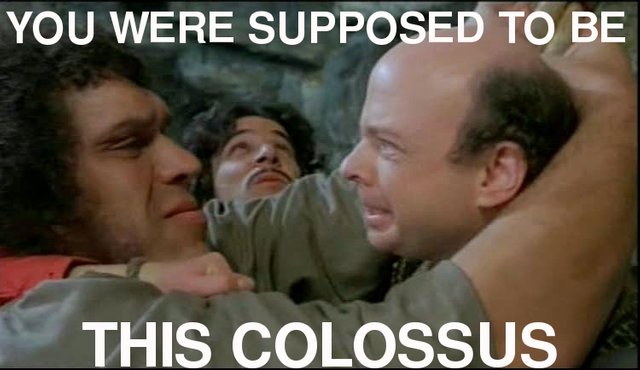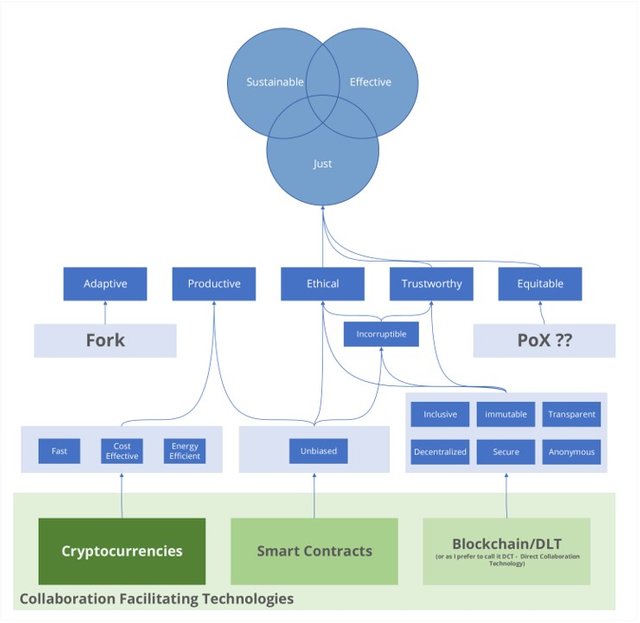Forget about the DAO - here's the JESO

DAO - What's in a word?
The term Decentralized Autonomous Organization has two adjectives: 1) "Decentralized", and 2) "Autonomous", describing a noun: "Organization".
the Organization - A Recognized Belonging
What do we mean when we say "Organization"?
Think of an organization as a group of people, organizations and perhaps things as well, that:
- Identify themselves as belonging to that group
- Are accepted by (enough) other members of the group as belonging to that group.
The source of this identification of belonging can stem from multiple sources. It could be a common purpose, geography, language, preference, and even medical condition. As long as enough people in that group agree on the identifier and recognize it.
I purposefully did not mention interaction or collaboration or any other type of action as a condition. Personally, I think it is. I think that members of an organization interact with other members or non-members in ways that affect each other. But this is not my point (at least not in this piece).
Anyway, now that we have a common language for "Organization", let's reconnect the adjectives and see what happens.
The Decentralized Organization - Let's talk about governance
Decentralized?. What’s wrong with Centralized? Well, first let's unpack governance. All organizations are governed in one way or another. An ant colony may seem to be running without governance. However, a closer look, reveals that it is governed by a set of biological rules and reflexes that allow it to solve problems and direct its member-ants toward achieving multiple purposes. The human body is similar in that respect. It is an organization of cells and other microbiota. In fact it is an organization of organizations. The central nervous system together with the endocrine system (and other systems) govern and manage the behavior and function of different parts in order to realize the different purposes and functions of the body. When we think about governance, we must first go beyond the popular notion of the word and realize that it does not necessitate centricity. It must be an efficient, effective mean of realizing the organization's purpose.
Democracies are used to thinking of governance as composed out of three branches:
- Legislative - Representatives that formalize the wants of the members of the organization into rules (Law)
- Executive - Representatives that execute and enforce the Law (Government)
- Judicial - Representatives that interpret the Law
There is one glaring branch missing this "trias politica" - setting the policy.
Policy is a course of action selected from alternatives to guide decisions. It should, in our context, reflect the purpose of the organization. Specifically, in representational governance, the wants of the members of the organization.
Who sets the policy?
It changes from one organization to another. Think of corporate governance. The shareholders can express their wants in the general assembly and in their buy, sell or hold actions. The company's board of directors is supposed to represent the interest of the shareholders. The Executive Suite is responsible for executing the directions of the board. However, effectively, who sets the policy? Who defines the agenda? In one company a strong CEO can be the dominant force in setting the policy. in another, it is the board and in a third, it can be the employees, r even the shareholders. The same thing happens in a democracy. The parliament is elected by the people and is supposed to make laws that reflect the wants of the people. However, in reality, laws are many times drafted or, at least, heavily influenced by officials from the executive branch. The reality of the "trias politica" is that there is no single body that is responsible for setting the policy and the dominance over setting the policy is a matter of circumstance.
So, first let me offer the fourth branch: - Strategical - Representatives that set the organization's policy by interpreting its purpose. The purpose can be as primitive as survival or as advanced as populating Mars.
[A couple of Notes:
- Representatives - I did not state the representatives must be elected, or that they need to be people or even individual members of the organization. Representatives are the entities that represent the purpose of the organization. They can be self-appointed or democratically elected. they can also be the entire membership body of the organization (as long as they represent the purpose of the entire organization and not only their own).
- Setting the policy can be the result of an intentional process or evolutionary. In that respect "representatives" can be software, genetic code, or processes.]
In spite of the risks that come from central governance, it is the most common form of governance most, human designed, organizations. There are very good reasons for that:
- Consensus - We talked about the wants and purpose of the organization, however, it is not clear that those are easy to decipher or that they even exist. How do you decide what the organization wants if on a specific issue there are diametrical positions that are split 70/30% among the members? Do you ignore the 30%? In all cases? Central representation governance gives representatives more than the ability to voice their members, it gives them the authority to decide, act and influence the entire organization, as best they can.
- Cost - Even if we could find a way to measure consensus and balance the different variables in a reasonable way, in large organizations, asking the members every time a decision needs to be made, what they think, is expensive.
- Expedience - A small, authoritative government has the ability to act fast. Deliberating every decision with the entire membership body is many times too slow to be effective.
But, you already see where I am going with this, right? Today's technology may very well allow us to decentralize governance and bypass the consensus problem, cost, and expediency.
This is not a theoretical issue, designed for governance scholars. It holds direct relevance to all of our lives and especially to the concept of DAO. Remember above when I asked what is wrong with central governance. That is the crux - central governance may be very accurate in defining authority and responsibility of each branch, but without a well-defined, enforceable authority and responsibility for setting the policy, it is taken by the powerful. Central governance puts huge power in the hands of very few representatives that are not accountable to the purpose of the organization or the wants of its members. And this power is seductive. Holding the power to set the agenda and policy, too many times leads to tyranny and dictatorship. Application of checks and balances such as the separation of power between the branches and elections, does help, but is grossly insufficient in most cases and does not protect the organization from corruption and abuse of power.
Revisit the DAO - What do we need the DAO for?
We mentioned the word "purpose" 13 times so far - what's another few. What's the purpose of the DAO concept, in light of everything I wrote above?
Well, I think that when a group of people (and/or things) have a shared purpose and they form an organization around that purpose, they want that organization to be:
- Effective in realizing the purpose
- Sustainable in being robust, stable and adaptive
- Just in execution
These categories are not mutually exclusive, and they echo of each other. For example, if we are Just in execution, people feel better in the organization and therefore are more likely to stay and support it making it more effective and more sustainable.
Unpacking these terms, we identify additional required attributes:
- Incorruptible and Transparent - Avoid/prevent the abuse of power by the few (Just and therefore Sustainable and Effective & Efficient).
- Trustworthy - Ensure that records/transactions are immutable (Sustainable and Just and therefore Effective & Efficient)
- Equitable - Distribute resources and value fairly (Just and therefore Sustainable and Effective & Efficient)
- Unbiased - Allowing for anonymity and removing personal judgment in decision making, where it is possible and useful, will reduce bias. (Just and therefore Sustainable and Effective & Efficient)
- Ethical - People in an organization may share common ethics they believe to self-evident and inalienable. For example, the right for privacy or the right for free speech. (Just and therefore Sustainable and Effective & Efficient)
- Productive - Avoid waste, optimize efficiency and keep cost effective (Effective & Efficient and therefore Sustainable)
I tried to organize these aspirations in a hierarchical structure:

Introducing the JESO – Just Effective Sustainable Organization
It is decentralized and designed with Cryptocurrencies, Smart Contracts and DLT (DCT). It is Equitable in the distribution of resources and value. It is ethical according to the consensus of the organization. It is trustworthy because it does not rely on any single person trusting any other single person. It is productive because of its decentralized design that implies that nodes can both create and capture value. It is adaptive or flexible, because it is decentralized, and user can opt to fork and mutate the organization.
The only key component that is still incomplete is an effective means of making it equitable. An equitable distribution of resources and value requires the JESO to measure value created by the nodes in the organization's network. The initial methods were designed to measure consensus and ensure the fidelity of block confirmation. In the deep sense of value measurement, consensus is also a metric for value creation. Since then this domain has grown and developed and many different Proof of X were and still are being developed to measure different parameters – brain, influence, work, bandwidth, stake, participation and more. A general solution to the measurement problem has yet to be introduced.
Perhaps the reason for that is the fact that teams working on this either were not interested in solving the general problem or that they were interested in solving the general problem and were looking for a complete, analytical, all-encompassing solution.
I cannot offer a solution at this point.
I can share my intuition that the solution will not be analytical. It will be a flexible system that can adapt to circumstances and react with its environment. It would be a general solution that will provide a close enough result for all systems and that will oscillate according to the idiosyncratic context of each specific implementation until it will settle on a dynamic, context specific equilibrium. It will stay there until things change again.
Enough for now.
Shahar
Up voted
thanks!